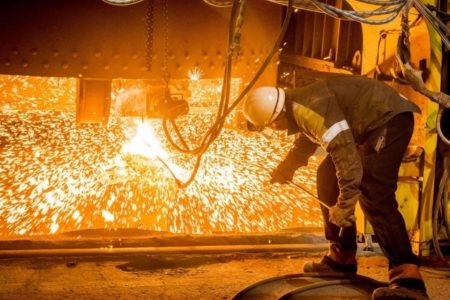January 31, 2020 – As a primary industry in our modern industrial world, steel making is a critical component of the economy. But in making steel, it requires huge amounts of heat and energy and is a significant source of greenhouse gas (GHG) emissions associated with global warming.
For steel manufacturing and its satellite fabrication offshoots, sustainability and environmental friendliness are critical to the industry’s future. That’s why the steel and metal industry is taking steps to become more environmentally friendly using a variety of innovative technologies. The following describes the technologies and processes being deployed for this purpose.
Organic Rankine Cycle (ORC) Turbines
ORC turbines can be found today in a steel plant located in northern Italy. During the summer, the ORC system generates enough energy from waste heat to meet the electricity requirements of 700 local families. In the winter, the waste heat is used to warm up to 2,000 homes. This helps reduce the factory’s carbon footprint and eliminates the need for water-cooling. The heat recovery system captures the exhaust gases and converts them into electricity and thermal power. Instead of generating steam from water, like conventional steam turbine power plant systems, ORC vaporizes an organic fluid that removes the need for water and allows the turbines to run at lower speeds and pressures resulting in less energy use.
Cleaning the Air
Steel companies are finding ways to clean their production processes through the application of technologies such as gas cleaning, an efficient solution for removing dust particles from exhaust gases. The gas cleaning system can lower operating costs of a steel mill to make it more sustainable.
Digitalization
Technological advancements are making a massive difference to the industry. Not only is it converting traditional production environments into smart plants, the digitalization is also improving steel manufacturing processes such as those used for steel strip products.
Digitalized plant production management systems are using different technologies to increase efficiency. These include applying sensors throughout the physical plant, digital production planning tools, and sophisticated artificial-intelligence-driven (AI) diagnostics. Each function within the steel plant undergoes continuous analysis with efficiency improvements applied through process improvements. These futuristic systems will deploy machine learning, a form of AI, to discover better ways to produce steel with minimum resources helping to reduce the environmental footprint of the entire industry.
Recycling
Recycling is contributing to a cleaner and more sustainable future for the industry. Steel is an ideal material for recycling. It can be used repeatedly. The industry has a mature scrap metal element to it and today’s steel plants use a high volume of scrap added to mined and processed raw materials to reduce waste. That doesn’t take the industry off the hook when it comes to waste. That’s why the industry is looking to find new ways to recycle as much of its output as possible. Recycling solutions convert the residue of production into profits. Even dust and fine mill waste can be converted into profitable resources. And modern steel mills are being outfitted with high-temperature water recycling systems to avoid wasting water used in the cooling process.
The high potential for recycling steel could eventually lead to a closed-cycle industry where no new iron ore will be needed in production. Instead, steelmaking will be an industry where products will be produced wholly from recycled materials.









